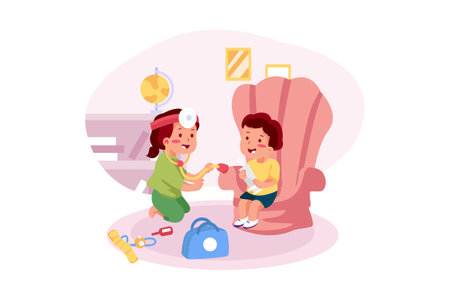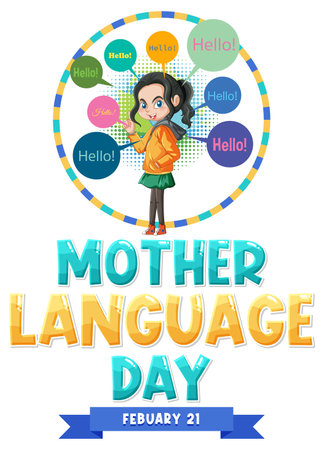1. The Science Behind Play-Based Learning
Play is more than just fun and games—its a crucial part of a childs development. Research shows that play stimulates cognitive, social, and emotional growth, helping children build essential life skills while having fun.
Cognitive Development
When children engage in play, they develop critical thinking and problem-solving skills. Activities like puzzles, building blocks, and pretend play encourage creativity and logical reasoning.
Social Development
Through group play, kids learn to communicate, collaborate, and navigate social interactions. Whether its sharing toys or working together on a project, play helps children understand teamwork and empathy.
Emotional Development
Play allows kids to express their emotions in a safe environment. Role-playing scenarios help them process feelings, develop self-regulation, and gain confidence in handling different situations.
Key Benefits of Play-Based Learning
| Development Area | How Play Helps |
|---|---|
| Cognitive | Enhances problem-solving, memory, and creativity |
| Social | Teaches cooperation, communication, and empathy |
| Emotional | Helps with self-expression, confidence, and resilience |
Why Play Matters
Experts agree that play isnt just about entertainment—it’s how kids make sense of the world. By incorporating play-based learning into daily routines, parents and educators can create meaningful experiences that support well-rounded development.
2. Different Types of Play and Their Benefits
Play comes in many forms, and each type contributes to a childs development in unique ways. Whether its free play, structured play, imaginative play, or physical play, every kind of play helps children build essential skills while having fun.
Free Play: Encouraging Creativity and Independence
Free play is unstructured and child-led, allowing kids to use their imagination without specific rules or guidelines. This type of play fosters creativity, problem-solving skills, and independence.
Benefits of Free Play:
- Encourages creativity: Kids invent their own games and stories.
- Builds decision-making skills: They choose what to do without adult direction.
- Enhances social skills: When playing with others, they learn cooperation and negotiation.
Structured Play: Learning Through Guidance
Unlike free play, structured play follows rules or has specific goals. Activities like board games, puzzles, or organized sports fall under this category. While still enjoyable, structured play helps children develop discipline and teamwork.
Benefits of Structured Play:
- Improves focus: Kids learn to follow instructions and complete tasks.
- Teaches patience: Turn-taking and rule-following help develop self-control.
- Enhances problem-solving abilities: Games with objectives encourage strategic thinking.
Imaginative Play: Expanding Creativity and Social Skills
Dressing up as superheroes, pretending to run a restaurant, or creating fantasy worlds—imaginative play allows kids to explore different roles and scenarios. This type of play strengthens emotional intelligence and storytelling skills.
Benefits of Imaginative Play:
- Sparks creativity: Kids invent characters and situations.
- Boosts communication skills: Role-playing encourages conversation and expression.
- Aids emotional development: Acting out scenarios helps children process feelings.
Physical Play: Building Strength and Coordination
Tumbling on the playground, playing tag, or riding a bike—physical play gets kids moving while improving motor skills. It’s essential for overall health and brain development.
Benefits of Physical Play:
- Develops motor skills: Running, jumping, and climbing enhance coordination.
- Keeps kids active: Promotes physical fitness and healthy habits.
- Boosts confidence: Mastering new movements builds self-esteem.
A Quick Comparison of Play Types
| Type of Play | Main Benefits | Examples |
|---|---|---|
| Free Play | Sparks creativity, builds independence | Doodling, exploring outdoors, playing with toys freely |
| Structured Play | Presents challenges, teaches discipline | Puzzles, board games, sports practice |
| Imaginative Play | Nurtures creativity, strengthens communication skills | Pretend tea parties, superhero role-play, storytelling |
| Physical Play | Aids motor skill development, promotes exercise | Swinging on the monkey bars, playing tag, biking |
No matter the type of play, every moment spent engaging in fun activities helps children grow emotionally, socially, physically, and intellectually. By encouraging different types of play throughout the day, parents can support well-rounded development in a natural and enjoyable way.

3. How Games and Fun Activities Boost Learning
Play isn’t just about having fun—it’s a powerful way for kids to learn and develop essential skills. Whether they’re solving puzzles, building with blocks, or engaging in imaginative play, children strengthen their problem-solving abilities, enhance creativity, and develop a lifelong love of learning.
Problem-Solving Skills Through Play
Games challenge kids to think critically and find solutions. Whether it’s figuring out how to complete a puzzle or strategizing in a board game, play helps develop important cognitive skills.
| Type of Play | How It Builds Problem-Solving Skills |
|---|---|
| Puzzles | Encourages logical thinking and pattern recognition. |
| Building Blocks | Helps kids understand structure, balance, and spatial awareness. |
| Board Games | Teaches strategy, planning ahead, and adapting to new challenges. |
Sparking Creativity with Fun Activities
Creative play allows kids to explore their imagination and express themselves freely. Activities like drawing, storytelling, or role-playing help children think outside the box and develop innovative ideas.
- Drawing & Painting: Encourages self-expression and visual creativity.
- Pretend Play: Helps children explore different roles and scenarios in a fun way.
- Dancing & Music: Boosts coordination while allowing free expression through movement and sound.
A Lifelong Love of Learning
The joy kids experience through play makes learning feel exciting rather than like a chore. When children associate learning with fun, they are more likely to stay curious, motivated, and engaged in exploring new concepts as they grow.
4. Practical Ways to Incorporate Play in Daily Life
Play isn’t just for recess or special occasions—it can be a natural part of everyday life! Here are some simple and effective ways parents, educators, and caregivers can seamlessly integrate play into daily routines.
Make Chores Fun
Turn household tasks into playful activities. Kids love challenges, so turning chores into games can make them more enjoyable.
| Chore | Playful Twist |
|---|---|
| Picking up toys | Set a timer and race to see who cleans up the fastest! |
| Laundry sorting | Turn it into a color-matching game or sock-pairing challenge. |
| Setting the table | Pretend you’re preparing for a royal banquet or restaurant service. |
Encourage Imaginative Play
Create opportunities for kids to use their imagination throughout the day. Simple props like cardboard boxes, kitchen utensils, or old clothes can inspire creative storytelling and role-playing.
- Pretend Play: Let kids act as chefs, astronauts, or superheroes while they play.
- Dramatic Storytelling: Encourage them to make up stories with their toys or puppets.
- Create a “Magic” Space: Dedicate an area at home where they can build forts, castles, or secret hideouts.
Add Play to Learning Activities
You don’t need formal lessons to teach kids new skills—play is one of the best learning tools! Try these fun ideas:
- Math Games: Use building blocks to teach counting and basic math concepts.
- Spelling Challenges: Create word scavenger hunts around the house.
- Sensory Play: Let kids explore textures with sand, water, or playdough.
Toy-Free Play Ideas
You don’t always need toys for playtime. Encourage movement and exploration with these simple ideas:
- Dancing: Have a spontaneous dance party in the living room.
- Nature Walks: Turn a walk into an adventure by looking for different plants and animals.
- Silly Challenges: See who can balance on one foot the longest or do the silliest walk across the room.
Create Playful Routines
You can add small moments of play throughout the day without disrupting your schedule. Here’s how:
- Mornings: Start the day with a fun wake-up song or stretching game.
- Bath Time: Use bath toys to tell stories or create bubble experiments.
- Bedtime: Make storytime interactive by letting kids act out parts of the book.
The key is to embrace play as part of everyday life. Whether through chores, learning activities, or free play, integrating fun into daily routines makes everything more enjoyable—and helps kids learn naturally!
5. Balancing Screen Time and Hands-On Play
In today’s digital world, screens are everywhere—from tablets and smartphones to TVs and gaming consoles. While technology can offer educational benefits, too much screen time can impact childrens development. Finding the right balance between digital play and hands-on activities is key to helping kids learn and grow in a healthy way.
Why Balance Matters
Both digital play and hands-on activities have unique advantages. Screens can provide interactive learning experiences, while physical play helps develop motor skills, creativity, and social interactions. Striking the right balance ensures children benefit from both worlds without becoming overly reliant on screens.
Screen Time vs. Hands-On Play: A Comparison
| Aspect | Screen Time | Hands-On Play |
|---|---|---|
| Cognitive Development | Enhances problem-solving and critical thinking through educational apps | Encourages creativity, imagination, and real-world problem-solving |
| Physical Activity | Limited movement, often sedentary | Improves motor skills, coordination, and overall health |
| Social Skills | Can be isolating but may include virtual interaction | Encourages teamwork, communication, and emotional intelligence |
| Sensory Engagement | Mainly visual and auditory stimulation | Uses touch, smell, sight, sound, and movement for full engagement |
Tips for Creating a Healthy Balance
- Set Limits: Establish daily screen time rules based on age-appropriate guidelines from pediatric experts.
- Create Tech-Free Zones: Designate areas like the dining table or bedrooms as screen-free spaces.
- Mix Digital with Physical Play: Encourage active games that incorporate movement alongside educational apps.
- Lead by Example: Model good screen habits by balancing your own technology use with offline activities.
- Prioritize Outdoor Play: Daily outdoor activities help boost mood, energy levels, and overall well-being.
The Role of Parents in Guiding Playtime
Your involvement is crucial in helping kids manage their screen time effectively. Engage in co-play by watching educational content together or using apps that encourage interaction. At the same time, encourage traditional play by providing hands-on toys like building blocks, puzzles, or craft materials. By being actively involved in their playtime choices, you help them develop a well-rounded approach to learning.
A Balanced Approach Leads to Better Learning
The goal isn’t to eliminate screens but to integrate them thoughtfully into a child’s routine. By balancing screen time with engaging hands-on activities, children get the best of both worlds—gaining digital literacy while developing essential life skills through active play.


